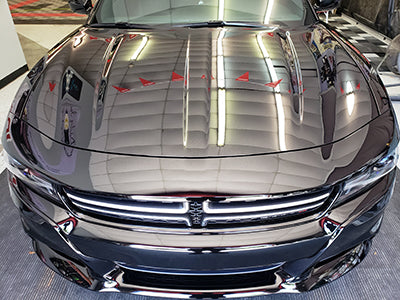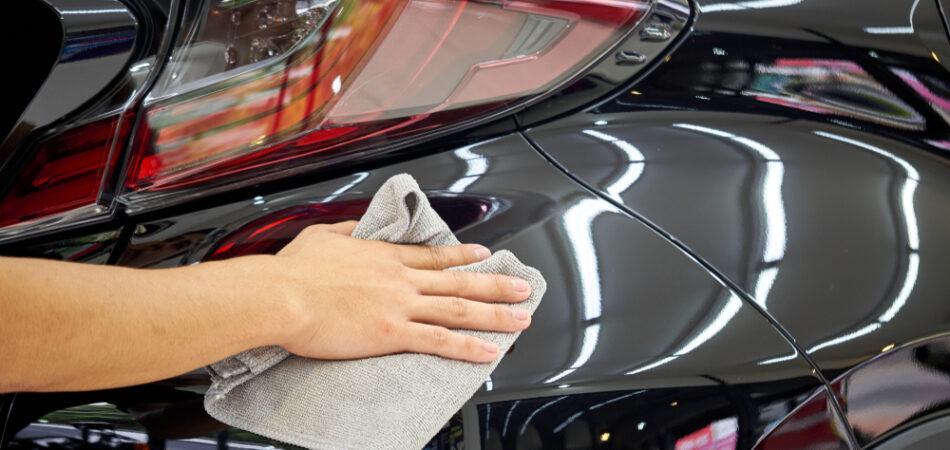Ceramic Coating: The Future of Automotive Surface Protection
Ceramic Coating: The Future of Automotive Surface Protection
Blog Article
Ceramic Coating vs. Traditional Wax: Which Supplies Much Better Long-Term Defense?
The debate between ceramic finishings and typical wax for vehicle protection has garnered considerable interest among automobile lovers and experts alike. While both satisfy of guarding paint, their distinctions in resilience, application, and long-lasting maintenance expenses might influence a consumer's option. Ceramic coatings boast superior durability and resistance to environmental variables, yet the intricacy of their application questions concerning access and usefulness. As we discover these contrasting choices, it becomes important to consider not just the instant benefits but additionally the ramifications for car care with time.
Review of Ceramic Finish
Ceramic covering has actually acquired substantial popularity amongst automotive lovers and detailers alike due to its sophisticated protective high qualities. This cutting-edge innovation is made to create a long lasting, hydrophobic shield over a vehicle's paint surface area, significantly boosting its resistance to environmental pollutants such as dirt, UV rays, and chemical discolorations. Unlike typical wax, which gives a short-lived layer of security, ceramic layers bond at a molecular level with the paint, using long-lasting sturdiness-- usually extending beyond 2 years with correct maintenance.
The application process includes thorough preparation of the lorry's surface, including cleaning and polishing to make sure optimum attachment. Once applied, the covering remedies to develop a durable layer that not just includes deepness and gloss to the paint yet additionally streamlines upkeep. With its hydrophobic residential properties, ceramic coating allows water and dirt to move off even more quickly, lowering the regularity of cleans and decreasing the risk of swirl marks.
Additionally, ceramic layers are readily available in various solutions, allowing users to pick items tailored to their details needs and choices. Overall, ceramic covering stands for a substantial development in paint defense modern technology, providing exceptional efficiency contrasted to conventional choices.
Summary of Standard Wax
Commonly pertained to as a staple in automobile care, wax acts as a preferred choice for those seeking an uncomplicated approach to boost and shield their lorry's paint - ceramic coating. Automotive wax normally consists of natural components, such as carnauba, or synthetic substances, created to create a safety layer on the surface of the paint. This layer not only improves the vehicle's gloss and beam but likewise provides an obstacle against ecological contaminants
The application of wax is usually easy to use, making it available for both specialists and DIY fanatics. It can be applied by hand or equipment, enabling convenience in the outlining procedure. Once used, wax requires a treating duration, after which it solidifies to create a protective covering. Wax is likewise recognized for its capability to fend off water, advertising a beading impact that aids in the prevention of water areas and deterioration.
However, while wax is efficient for boosting the visual appeal of a car, it is essential to keep in mind that the protection it provides may require extra frequent reapplication compared to alternative products, such as ceramic finishes. Overall, conventional wax stays a popular alternative for those focusing on ease of use and immediate aesthetic renovation.
Durability and Durability Contrast
While both ceramic layers and traditional wax offer protective benefits for vehicle paint, their longevity and longevity differ dramatically. Conventional wax, usually made from all-natural carnauba or artificial polymers, usually provides a protective layer that lasts approximately three to 6 months. This reasonably short lifespan necessitates routine reapplication to preserve optimal security.
On the other hand, ceramic finishes are engineered from sophisticated nanotechnology, creating a covalent bond with the paint surface area. This causes a robust, hydrophobic layer that can sustain for two to 5 years, depending upon the item and environmental problems. The premium resilience of ceramic coatings is associated to their chemical structure, which supplies boosted resistance to scrapes, UV rays, and oxidation.

Protection Against Ecological Factors
Shielding a car's paint from ecological elements is critical for keeping its look and worth gradually. Vehicles are regularly revealed to a range of components, consisting of UV rays, bird droppings, tree sap, acid rainfall, and road gunk, all of which can endanger the integrity of the paintwork.
Ceramic coverings give a robust protection against these environmental assailants. Unlike typical wax, which can degrade swiftly under UV direct exposure, ceramic finishes form a durable, hydrophobic layer that resists the hazardous effects of sunlight and toxic wastes. This innovative innovation produces a chemical bond with the lorry's surface, supplying superior security that lasts for years, even in severe conditions.
Typical wax, while much easier to apply, normally requires constant reapplication and offers restricted resistance to pollutants and UV rays. Gradually, it can break down, leaving the paint susceptible to scrapes and oxidation. In contrast, ceramic coverings keep their safety qualities longer, significantly lowering the danger of paint damage and making sure that the car preserves its aesthetic appeal. As a result, ceramic coatings are progressively acknowledged as the remarkable selection for lasting defense against environmental factors.
Application and Maintenance Differences
The techniques of application and subsequent maintenance for ceramic coatings and typical wax vary considerably, affecting the overall user experience and efficiency of each item. Ceramic finishings call for a more complex application procedure, usually including my blog surface preparation that includes cleaning, sanitizing, and polishing the automobile. Once the surface prepares, the ceramic covering is used in a controlled environment, commonly needing specialist know-how to guarantee proper curing and bonding to the paint.

While both products improve automobile look, the longer-lasting defense used by ceramic layers may validate their initial investment, in spite of the more demanding application procedure. On the other hand, traditional wax stays a popular choice for those looking for an easier, albeit short-term, solution.

Verdict
To conclude, ceramic finishes show substantial benefits over typical wax in regards to toughness and ecological defense. With a lifespan expanding two to five years and exceptional resistance to UV rays, dust, and chemical spots, ceramic finishes provide an extra reliable service for lasting vehicle maintenance. The application procedure might call for expert knowledge, the resulting price savings and decreased regularity of reapplication highlight the value of ceramic finishings for those seeking optimal vehicle protection.
The dispute in go to this website between ceramic finishings and standard wax for car protection has actually gathered significant attention among auto lovers and experts alike. Unlike conventional wax, which supplies a short-lived layer of protection, ceramic layers bond at a molecular degree with the paint, supplying durable resilience-- commonly prolonging beyond two years with correct maintenance.
While both ceramic finishings and conventional wax offer protective benefits for automotive paint, their longevity and long life vary substantially. For cars and truck enthusiasts looking for long-term protection, ceramic finishes present an engaging advantage over conventional wax items.
In final thought, ceramic finishings demonstrate considerable advantages over standard wax in terms of sturdiness and environmental defense.
Report this page